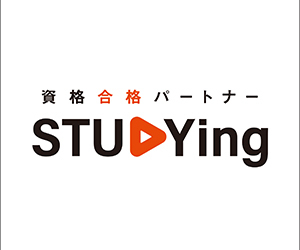TOEICの長文対策をしたい!特にPart 7!
と思った時に、表があったりして、対策するにもテキストが…
なんて時代が終わるかも!?
気になったニュースのトピックを活用して、
TOEIC Part 7風の長文問題を作ってみました。
雰囲気、高校生の共通テストの対策にもなりそうです。
TOEIC Part 7 – 1 (passage)
The use of Chat GPT in educational settings has sparked both enthusiasm and skepticism. Proponents argue that incorporating AI technologies into education can bring numerous benefits. Firstly, AI-powered chatbots can provide personalized and immediate feedback to students, helping them grasp complex concepts and enhance their understanding. These chatbots can also offer round-the-clock assistance, allowing students to access help and resources whenever they need them. Furthermore, AI can analyze vast amounts of data to identify learning patterns and adapt teaching methods accordingly, ensuring a more tailored and effective educational experience.
However, critics raise concerns about the overreliance on AI in education. They argue that while AI can offer valuable support, it cannot replace the unique abilities of human teachers. Human educators possess emotional intelligence, empathy, and the capacity to build strong relationships with students, which are vital elements of the learning process. Additionally, some worry that excessive dependence on AI might hinder critical thinking and problem-solving skills among students, as they may become overly reliant on automated solutions. Striking a balance between AI and human involvement in education is crucial to leverage the advantages of AI while preserving the essential qualities of human teaching.
TOEIC Part 7 – 1 (questions)
- According to the passage, what are the advantages of using AI in education?
A) Immediate feedback and personalized assistance.
B) Enhancement of critical thinking and problem-solving skills.
C) Emotional intelligence and empathy.
D) Round-the-clock availability of teachers. - What concern do critics have regarding the use of AI in education?
A) The lack of personalized feedback for students.
B) The hindrance of critical thinking skills.
C) The inability to adapt teaching methods.
D) The absence of emotional intelligence in chatbots. - What does the passage emphasize about the abilities of human teachers?
A) Their capacity to provide immediate feedback.
B) Their reliance on AI technologies.
C) Their role in preserving critical thinking skills.
D) Their ability to analyze vast amounts of data.
TOEIC Part 7 – 1 (answers)
- Answer: A) Immediate feedback and personalized assistance.
Explanation: The passage states that AI-powered chatbots can provide personalized and immediate feedback, helping students understand complex concepts and enhancing their understanding. This aligns with choice A. - Answer: B) The hindrance of critical thinking skills.
Explanation: The passage mentions the concern that excessive dependence on AI might hinder critical thinking and problem-solving skills among students, as they may become overly reliant on automated solutions. This corresponds to choice B. - Answer: C) Their role in preserving critical thinking skills.
Explanation: The passage highlights that human educators possess qualities such as emotional intelligence, empathy, and the ability to build strong relationships with students, which are vital elements of the learning process. This supports choice C, as it implies that human teachers play a crucial role in preserving critical thinking skills.
TOEIC Part 7 – 1 (translation)
Chat GPTを教育現場で使用することは、熱狂と懐疑を呼んでいます。支持者は、AI技術を教育に取り入れることで多くの利点がもたらされると主張しています。まず第一に、AI搭載のチャットボットは、個別化された即時のフィードバックを生徒に提供し、複雑な概念を理解し、理解を高めるのに役立ちます。これらのチャットボットは24時間いつでもアシストを提供し、生徒が必要な時に助けや資源にアクセスできるようにすることもできます。さらに、AIは膨大な量のデータを分析して学習パターンを特定し、教授法を適応させることで、より個別化された効果的な教育体験を保証できます。
しかし、批評家はAIに過度に頼ることへの懸念を表明しています。彼らは、AIが価値ある支援を提供できる一方で、人間の教師の独特の能力を置き換えることはできないと主張しています。人間の教育者は感情の知性、共感力、生徒との強い関係構築の能力を持っており、これらは学習プロセスにおける重要な要素です。さらに、AIへの過度な依存が生徒の批判的思考力や問題解決能力を妨げる可能性があるという懸念もあります。生徒が自動化された解決策に過度に依存することがあるためです。AIと人間の関与をバランス良く組み合わせることは、AIの利点を最大限に活用しながら、人間の教育の本質的な質を保護するために重要です。
TOEIC Part 7 – 2 (passage)
With the rapid advancements in technology, the field of education has also embraced the use of artificial intelligence (AI) in various ways. One notable application of AI in education is the utilization of Chat GPT, an advanced language model, to enhance learning experiences. Chat GPT provides students with personalized and interactive support, allowing them to receive immediate feedback and access to vast amounts of information. This technology has the potential to cater to different learning styles and speeds, ensuring that students can learn at their own pace. Additionally, AI-powered tools can help educators analyze student data and identify areas where additional assistance may be required. However, while AI brings many advantages to education, there are also concerns regarding its impact on human abilities and the potential for overreliance on technology.
The integration of AI in educational settings offers several advantages that contribute to a more efficient and effective learning process. Firstly, AI-powered systems can adapt to the individual needs and preferences of students. These systems can analyze vast amounts of data to identify patterns and tailor instructional materials accordingly. As a result, students receive personalized content that aligns with their specific requirements. Secondly, AI can facilitate the automation of administrative tasks, such as grading and scheduling, allowing educators to focus more on teaching and providing valuable guidance to students. This automation can save time and resources, enabling educators to allocate their efforts towards fostering critical thinking and problem-solving skills in students.
While AI brings several benefits to education, it is essential to recognize the importance of human abilities in the learning process. Human educators possess unique qualities that go beyond the capabilities of AI systems. They can empathize, motivate, and build meaningful relationships with students, creating a supportive and engaging learning environment. Moreover, human educators possess contextual knowledge and the ability to adapt their teaching methods based on individual student needs. These interpersonal skills play a crucial role in education, fostering critical thinking, creativity, and social development. Therefore, while AI can enhance certain aspects of education, it should be viewed as a complementary tool rather than a replacement for human educators.
TOEIC Part 7 – 2 (questions)
- How does Chat GPT enhance learning experiences?
A) By providing immediate feedback
B) By replacing human educators
C) By limiting access to information
D) By focusing on standardized learning methods
- What is one advantage of integrating AI in educational settings?
A) Increased workload for educators
B) Reduced personalization of content
C) Automation of administrative tasks
D) Limited access to instructional materials
- What is the importance of human abilities in the learning process?
A) Building meaningful relationships with students
B) Automating administrative tasks
C) Adapting teaching methods based on AI recommendations
D) Enhancing access to information
- How does AI complement human educators?
A) By replacing them in the classroom
B) By automating teaching methods
C) By providing contextual knowledge
D) By analyzing vast amounts of data
- What skills do human educators possess that go beyond AI systems?
A) Critical thinking and problem-solving
B) Automation of administrative tasks
C) Empathy and building relationships
D) Tailoring content to individual needs
TOEIC Part 7 – 2 (answers)
- Answer: A) By providing immediate feedback
Explanation: Chat GPT enhances learning experiences by providing students with immediate feedback, as mentioned in the passage. This allows students to receive personalized and interactive support, which is one of the advantages of using AI in education. - Answer: C) Automation of administrative tasks
Explanation: One advantage of integrating AI in educational settings, as mentioned in the passage, is the automation of administrative tasks. This allows educators to save time and resources, focusing more on teaching and providing guidance to students. - Answer: A) Building meaningful relationships with students
Explanation: The importance of human abilities in the learning process, as mentioned in the passage, is the ability to build meaningful relationships with students. This helps create a supportive and engaging learning environment, fostering better social development and student engagement. - Answer: D) By analyzing vast amounts of data
Explanation: AI complements human educators by analyzing vast amounts of data, as mentioned in the passage. This helps in tailoring instructional materials and providing insights into student performance, allowing educators to make informed decisions in their teaching approach. - Answer: C) Empathy and building relationships
Explanation: Human educators possess the skills of empathy and building relationships, which go beyond the capabilities of AI systems, as mentioned in the passage. These skills contribute to creating a supportive and engaging learning environment.
TOEIC Part 7 – 2 (translation)
急速な技術の進歩に伴い、教育の分野でも人工知能(AI)の利用がさまざまな方法で取り入れられるようになっています。教育におけるAIの顕著な応用の1つは、高度な言語モデルであるChat GPTの活用です。Chat GPTは個別のサポートを提供し、学生が即時のフィードバックを受けることや膨大な情報にアクセスすることができます。この技術は異なる学習スタイルやペースに合わせることができるため、学生が自分のペースで学ぶことができます。さらに、AIを活用したツールは教育者が学生のデータを分析し、追加の支援が必要な領域を特定するのに役立ちます。しかし、AIは教育に多くの利点をもたらす一方で、人間の能力への影響や技術への過度の依存の懸念も存在します。
教育の現場にAIを統合することは、効率的かつ効果的な学習プロセスに貢献するいくつかの利点があります。まず、AIを活用したシステムは学生の個別のニーズや好みに適応することができます。これらのシステムは膨大なデータを分析してパターンを特定し、教材をそれに応じて調整することができます。その結果、学生は自分の要求に合った個別化されたコンテンツを受け取ることができます。また、AIは採点やスケジュールなどの管理業務の自動化を促進し、教育者が教えることや貴重な指導を提供することにより集中できるようにします。この自動化により時間とリソースが節約され、教育者は学生の批判的思考や問題解決能力の育成に努めることができます。
AIは教育に多くの利点をもたらす一方で、学習プロセスにおける人間の能力の重要性も認識することが重要です。人間の教育者はAIシステムの能力を超えるユニークな資質を持っています。彼らは共感し、学生を動機づけ、意味のある関係を築くことができ、支援的で魅力的な学習環境を作り出します。さらに、人間の教育者は文脈に即した知識を持ち、個々の学生のニーズに応じて教授方法を適応させる能力を持っています。これらの対人スキルは教育において重要な役割を果たし、批判的思考、創造性、社会的発達を育むのに貢献します。したがって、AIは教育の一部を向上させることができるものの、人間の教育者の代替ではなく、補完的なツールとして捉えるべきです。

TOEIC Part 7 – 3 (passage)
Artificial intelligence (AI) has revolutionized various aspects of our lives, including education. The integration of AI technologies, such as Chat GPT, in educational settings has gained significant attention. Proponents argue that AI can enhance the learning experience, provide personalized education, and improve efficiency. One of the key advantages of AI in education is its ability to adapt to individual needs. With AI-powered systems, students can receive customized learning materials and feedback based on their strengths, weaknesses, and learning styles. This personalized approach fosters student engagement and can lead to better academic outcomes.
Moreover, AI can facilitate access to educational resources. Through online platforms, students can access a vast range of materials and courses, transcending geographical limitations. This democratization of education has the potential to bridge educational gaps and provide equal opportunities for all. AI can also assist teachers in administrative tasks, such as grading and assessment, allowing them to focus more on teaching and providing support to students. However, despite its benefits, there are concerns regarding the overreliance on AI in education. Critics argue that the human element should not be overlooked.
AI has undoubtedly made significant contributions to education, but it is important to explore the potential drawbacks. One concern is the potential bias in AI algorithms. AI systems learn from existing data, which may reflect biases and inequalities present in society. If unchecked, these biases can perpetuate discrimination and reinforce societal inequalities. Therefore, it is crucial to ensure that AI technologies in education are designed and monitored with ethical considerations, promoting fairness and equal opportunities for all students. Additionally, there are concerns about the privacy and security of student data. As AI collects and analyzes vast amounts of information, it becomes essential to establish robust data protection measures to safeguard sensitive student data.
Furthermore, the reliance on AI technologies in education raises questions about the future role of teachers. Some argue that AI could replace human teachers, leading to job losses and a lack of personalized support. However, an alternative perspective suggests that AI can complement and augment teachers’ roles rather than replace them. By automating routine tasks, teachers can focus on building meaningful connections with students and providing individualized guidance. The key lies in leveraging AI as a tool to enhance teaching practices rather than viewing it as a substitute for human educators.
Comment
While AI in education offers numerous advantages, it is crucial to consider the limitations and the importance of human abilities. The role of teachers goes beyond providing information; they offer guidance, mentorship, and emotional support to students. Human interaction fosters social and emotional development, which is essential for well-rounded education. Moreover, critical thinking, creativity, and problem-solving skills are uniquely human attributes that AI cannot fully replicate. By recognizing the value of human abilities, education systems can strike a balance between technology and human involvement, creating a comprehensive learning environment.
TOEIC Part 7 – 3 (questions)
- What is one advantage of using AI in education?
a) Limited access to educational resources
b) Standardized approach to teaching
c) Personalized learning experience
d) Increased workload for teachers - What is a concern associated with the use of AI in education?
a) Bridging educational gaps
b) Enhanced student engagement
c) Potential bias in AI algorithms
d) Reduced reliance on human abilities - What is the potential role of AI in teaching according to the alternative perspective?
a) Replacement for human teachers
b) Automation of routine tasks
c) Limited interaction with students
d) Decreased emphasis on individualized guidance - What is the main argument against the overreliance on AI in education?
a) The potential bias in AI algorithms
b) The importance of personalized learning
c) The need for data protection measures
d) The unique abilities of human teachers - What is one potential drawback of AI in education?
a) Improved efficiency in administrative tasks
b) Limited access to educational resources
c) Augmented role of human teachers
d) Potential discrimination due to bias in algorithms
TOEIC Part 7 – 3 (answers)
- c) パーソナライズされた学習体験
AIを教育に活用することの利点の一つは、個別のニーズに適応する能力です。AIを搭載したシステムにより、学生は自身の強み、弱み、学習スタイルに基づいたカスタマイズされた学習教材やフィードバックを受けることができます。この個別対応のアプローチは、学生の関与を促し、より良い学術的成果につながる可能性があります。
- c) AIアルゴリズムのバイアスの可能性
教育におけるAIの使用に関する懸念の一つは、AIアルゴリズムの潜在的なバイアスです。AIシステムは既存のデータから学びますが、社会に存在するバイアスや不平等が反映される可能性があります。これらのバイアスが放置されると、差別を継続し、社会的な不平等を強化することになります。
- b) ルーティン業務の自動化
代替的な視点によると、AIは人間の教師の役割を補完し、拡張することができるとされています。例えば、ルーティン業務の自動化により、教師は生徒との意味のある関係を構築し、個別の指導を提供することに集中することができます。AIを教育の実践を向上させるためのツールとして活用することが重要です。
- d) 人間の教師のユニークな能力
AIに過度に頼ることに対する主な議論は、人間の教師のユニークな能力の重要性です。教師の役割は情報提供にとどまらず、学生へのガイダンス、メンターシップ、感情的なサポートを提供することも含まれます。人間同士の交流は社会的および感情的な発達を促し、総合的な学習環境を作り出す上で重要です。
- d) アルゴリズムのバイアスによる潜在的な差別
教育におけるAIの潜在的な欠点の一つは、バイアスの可能性です。AIが収集し、分析する大量の情報によって、生徒の個人情報が保護されるためには、堅固なデータ保護策が必要となります。
TOEIC Part 7 – 3 (translation)
人工知能(AI)は、教育を含む私たちの生活のさまざまな側面を革新しました。Chat GPTなどのAI技術を教育の現場に統合することが注目を集めています。支持者たちは、AIが学習体験を向上させ、パーソナライズされた教育を提供し、効率を向上させることができると主張しています。教育におけるAIの主な利点の一つは、個別のニーズに適応する能力です。AIを搭載したシステムにより、学生は自身の強み、弱み、学習スタイルに基づいたカスタマイズされた学習教材やフィードバックを受けることができます。この個別対応のアプローチは、学生の関与を促し、より良い学術成果につながる可能性があります。
さらに、AIは教育資源へのアクセスを容易にすることができます。オンラインプラットフォームを通じて、学生は地理的な制約を超えて様々な教材やコースにアクセスすることができます。この教育の民主化は、教育の格差を埋め、全ての人に平等な機会を提供する可能性を秘めています。AIはまた、教師の評価や評価などの管理業務を支援することができ、教師はより教えることや学生へのサポートに集中することができます。しかし、利点がある一方で、AIに過度に依存することに関して懸念があります。批評家たちは、人間の要素を見逃すべきではないと主張しています。
AIは確かに教育に大きな貢献をしていますが、潜在的な欠点を探ることも重要です。その一つは、AIアルゴリズムの潜在的なバイアスです。AIシステムは既存のデータから学習しますが、社会に存在するバイアスや不平等が反映される可能性があります。これらのバイアスがチェックされないと、差別を助長し、社会的な不平等を強化する可能性があります。そのため、教育におけるAI技術は、倫理的な考慮を持って設計・監視され、公正さと平等な機会を促進することが重要です。また、学生データのプライバシーとセキュリティに関する懸念もあります。AIが膨大な情報を収集し分析するため、重要な学生データを保護するために堅牢なデータ保護策を確立することが不可欠です。
さらに、教育におけるAI技術への依存は、教師の将来的な役割について疑問を呈します。一部の人々は、AIが人間の教師を置き換える可能性があり、仕事の喪失や個別のサポートの欠如をもたらすと主張しています。しかし、別の視点では、AIは教師の役割を補完し、拡張することができると提案しています。ルーティン業務の自動化により、教師は生徒との意味のある関係を築き、個別の指導を提供することに集中することができます。鍵は、AIを教育の実践を向上させるツールとして活用し、人間の教育者の代替物としてではなく、補完するものとして捉えることにあります。
コメント:
教育におけるAIの多くの利点が存在する一方で、制約や人間の能力の重要性を考慮することが重要です。教師の役割は情報提供にとどまらず、生徒へのガイダンス、メンターシップ、感情的なサポートを提供します。人間同士の交流は社会的および感情的な発達を促し、総合的な教育には欠かせません。さらに、批判的思考、創造性、問題解決能力は、AIが完全に再現することができない人間特有の能力です。人間の能力の価値を認識することにより、教育システムは技術と人間の関与のバランスを取ることができ、包括的な学習環境を作り出すことができます。
TOEIC Part 7 – 4 (passage)
Title: The Role of AI in Education: Exploring Pros and Cons
Artificial Intelligence (AI) has emerged as a powerful tool in various sectors, and education is no exception. With its ability to analyze data, personalize learning experiences, and provide instant feedback, AI has the potential to revolutionize the way we educate and learn. However, as with any technological advancement, there are both advantages and disadvantages to incorporating AI into educational settings.
On the positive side, AI can enhance the educational experience in several ways. Firstly, it allows for personalized learning by adapting to each student’s individual needs and pace. AI-powered systems can collect and analyze data on students’ strengths and weaknesses, providing tailored content and exercises that cater to their specific requirements. This personalized approach helps students grasp concepts more effectively and encourages self-paced learning, promoting a deeper understanding of the subject matter.
Moreover, AI can provide valuable support to educators. By automating routine administrative tasks, such as grading assignments and organizing schedules, teachers can dedicate more time to instruction and student interaction. AI-powered tools can also assist teachers in identifying areas where students might be struggling, enabling timely interventions and personalized guidance. With AI as a collaborative partner, educators can focus on nurturing critical thinking, creativity, and interpersonal skills, which are fundamental to a holistic education.
However, despite the potential benefits, concerns regarding the overreliance on AI in education have also been raised. One key argument is that AI lacks the human touch and empathy necessary for effective teaching and learning. While AI can provide information and guidance, it cannot replace the emotional connection that humans bring to the educational process. The ability of teachers to empathize, motivate, and inspire students is a unique attribute that fosters a supportive learning environment.
Additionally, the rapid development of AI raises concerns about equity and accessibility. Not all students have equal access to technology or the resources needed to benefit fully from AI-powered educational tools. Relying heavily on AI could exacerbate the digital divide, leaving marginalized groups behind. Therefore, while AI has immense potential, it is crucial to strike a balance between technological advancements and the importance of human interaction and equitable education opportunities for all.
Step-by-step deduction and indication from the passage:
- The advantages of AI in education include personalized learning, tailored content, and self-paced learning. (Highlighted in paragraph 2)
- AI can support teachers by automating administrative tasks and identifying areas where students need assistance. (Highlighted in paragraph 2)
- The limitations of AI in education involve the lack of human touch and empathy. (Highlighted in paragraph 3)
- The accessibility and equity issues related to AI in education need to be addressed. (Highlighted in paragraph 4)
| Pros of AI in Education | Cons of AI in Education |
|---|---|
| Personalized learning | Lack of human touch |
| Tailored content | Lack of empathy |
| Self-paced learning | Accessibility issues |
| Teacher support | Digital divide |
TOEIC Part 7 – 4 (questions)
- What is one advantage of AI in education?
a) Reduced teacher workload
b) Enhanced human connection
c) Limited access to resources
d) Less personalized learning - What is a limitation of AI in education?
a) Improved empathy and understanding
b) Tailored content for students
c) Lack of human touch
d) Promoting equitable opportunities - How can AI support teachers?
a) Increasing the digital divide
b) Automating administrative tasks
c) Fostering emotional connections
d) Encouraging critical thinking - Which attribute of human interaction is AI unable to replicate?
a) Personalized learning
b) Empathy and motivation
c) Accessibility and equity
d) Reduced teacher workload - What concern is associated with the rapid development of AI in education?
a) Enhanced learning experiences
b) Overreliance on technology
c) Improved accessibility for all students
d) Equal distribution of resources - Which of the following is NOT a disadvantage of AI in education?
a) Lack of human touch
b) Lack of empathy
c) Reduced teacher workload
d) Accessibility issues
TOEIC Part 7 – 4 (answers)
- AIが教育において有利な点は、教育を個別化し、自分のペースで学べることです。 (2段落目で強調されています)
解答: a) 教師の仕事量の軽減
解説: AIは、教師が自動的に行うことができる業務を自動化することにより、教師の仕事量を減らすことができます。これにより、教師は教育と学生との対話にさらに時間を割くことができます。
- AI教育の制約として挙げられるものは何ですか?
a) 高度な共感と理解
b) 学生向けに調整されたコンテンツ
c) 人間らしさの欠如
d) 機会均等の促進
解答: c) 人間らしさの欠如
解説: AIは情感的なつながりを持つことができず、効果的な教育や学習には必要な要素です。AIは情報とガイダンスを提供できますが、人間が教育プロセスにもたらす感情的な結びつきを置き換えることはできません。
- AIは教師をどのようにサポートできますか?
a) デジタル格差の増大
b) 管理業務の自動化
c) 感情的な結びつきの育成
d) 批判的思考の促進
解答: b) 管理業務の自動化
解説: AIは教師が課題の採点やスケジュールの組織化などのルーチン業務を自動化することで、教師をサポートすることができます。これにより、教師は批判的思考、創造性、人間関係のスキルの育成に重点を置くことができます。
- AIが再現できない人間の相互作用の属性は何ですか
a) 個別化された学習
b) 共感と動機づけ
c) アクセシビリティと均等性
d) 教師の仕事量の軽減
解答: b) 共感と動機づけ
解説: AIは情緒的なつながりを持つことができません。教師が学生との共感や動機づけを行う能力は、教育プロセスにおいて重要な要素であり、環境のサポートを提供する独特の属性です。
- AI教育の急速な発展に関連する懸念は何ですか?
a) 向上した学習体験
b) 技術への過度の依存
c) すべての学生への改善されたアクセス性
d) 資源の均等な配分
解答: b) 技術への過度の依存
解説: AI教育の急速な発展により、技術への過度の依存が懸念されています。AIに過度に依存することは、デジタル格差を広げ、社会的に弱い立場のグループを取り残す可能性があります。
- 以下のうち、AI教育の欠点ではないものはどれですか?
a) 人間らしさの欠如
b) 共感の欠如
c) 教師の仕事量の軽減
d) アクセシビリティの問題
解答: c) 教師の仕事量の軽減
解説: AI教育の欠点として挙げられるものには、人間らしさの欠如や共感の欠如、アクセシビリティの問題がありますが、教師の仕事量の軽減は利点の一つです。
TOEIC Part 7 – 4 (translation)
タイトル:教育におけるAIの役割:利点と欠点の探究
パッセージ:
人工知能(AI)はさまざまな分野で強力なツールとして現れ、教育も例外ではありません。データの分析能力、学習体験の個別化、リアルタイムなフィードバックの提供など、AIは私たちの教育や学習方法を根本から変革する可能性を秘めています。しかし、あらゆる技術の進歩と同様に、教育現場へのAIの統合には利点と欠点の両方が存在します。
良い面では、AIは教育体験をいくつかの方法で向上させることができます。まず第一に、個別化された学習を可能にし、各学生の個別のニーズとペースに適応します。AIを搭載したシステムは、学生の強みや弱点に関するデータを収集・分析し、特定の要件に合わせたカスタマイズされたコンテンツや演習を提供します。この個別化されたアプローチにより、学生はより効果的に概念を理解し、自己ペースで学習することが促され、対象の深い理解が促進されます。
また、AIは教育者に貴重なサポートを提供することができます。課題の採点やスケジュールの組織化などの日常的な行政業務を自動化することで、教師は指導と学生との対話により多くの時間を割くことができます。AIを搭載したツールはまた、学生が苦労している可能性のある分野を教師に伝えることで、適切なタイミングで介入し、個別の指導を可能にします。AIが協力的なパートナーとして存在することで、教育者は批判的思考、創造性、人間関係のスキルを育むことに集中することができます。これらは、総合的な教育にとって基本的な要素です。
しかし、潜在的な利点にもかかわらず、AIへの過度な依存に関する懸念も提起されています。主な議論の一つは、AIが効果的な教育や学習に必要な人間らしさや共感を欠いているというものです。AIは情報やガイダンスを提供することはできますが、教育プロセスに人間がもたらす感情的な結びつきを置き換えることはできません。教師が学生と共感し、動機づけ、鼓舞する能力は、支援的な学習環境を育むための独特の属性です。
さらに、AIの急速な発展は、公平性とアクセシビリティに関する懸念を引き起こします。すべての学生が技術やAIを活用した教育ツールを十分に活用するために必要なリソースへの平等なアクセスを持っているわけではありません。AIに過度に依存することは、デジタル格差を悪化させ、社会的に弱い立場のグループを取り残す可能性があります。したがって、AIには莫大な可能性がある一方、技術の進歩と人間の相互作用の重要性、すべての人に対する公平な教育機会の重要性とのバランスを取ることが重要です。

次の問題
[広告]
確かな英語力は、日々の継続から。
その継続を後押しする、第二言語習得理論に基づいた
オンライン英語学習プログラムがあります。
英語を使う人のための、確実なスキルアップが望める
7日間の無料体験はこちらから!

TOEFL ibt ライティング対策も、
あるテクノロジーを活用すれば、一発解決!
自分1人でも、ライティングは対策出来る時代に。
英会話を始めてみたいけれど、どのサービスが良いか分からない…
そんな方は、まず、この記事で3つのサービスを比べてみてはいかがでしょうか?
英語力を効率良く伸ばすことができるサービス3選です。



-320x180.jpg)
-320x180.jpg)
-320x180.jpg)

-320x180.jpg)

-320x180.jpg)

-320x180.jpg)
-320x180.jpg)




コメント